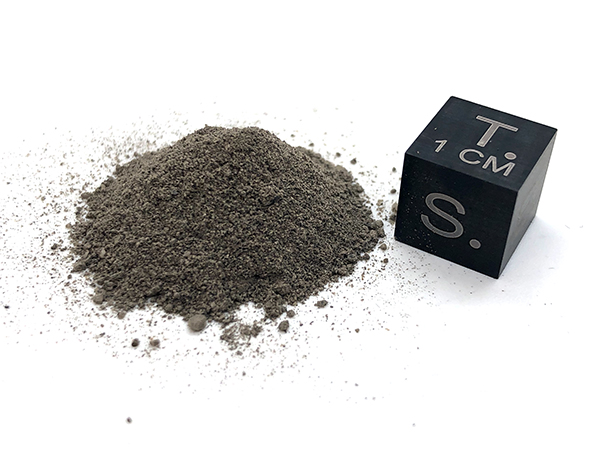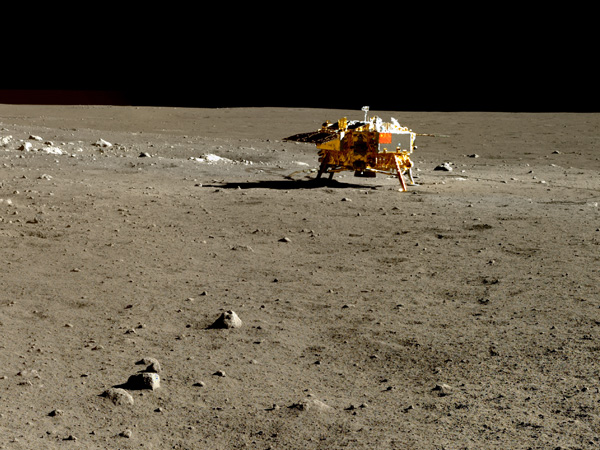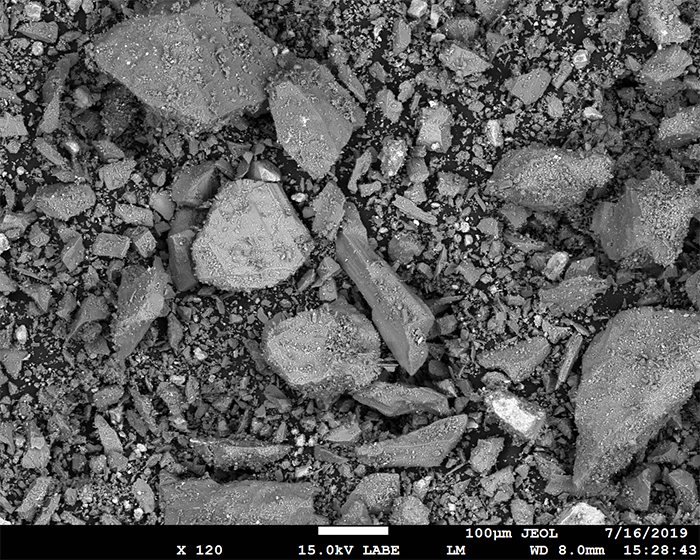Exolith Simulant: LMS-1 Lunar Mare Simulant
Mineralogy
| Component | Wt.% |
|---|---|
| Pyroxene | 32.8 |
| Glass-rich basalt | 32.0 |
| Anorthosite | 19.8 |
| Olivine | 11.1 |
| Ilmenite | 4.3 |
Bulk Chemistry
Because LMS-1 is a mineralogical standard, the bulk chemistry of simulants created from the standard will differ depending on the crystal chemistry of the source minerals used. Below, we report the latest analysis for the production version of LMS-1.
| Oxide | Wt.% |
|---|---|
| SiO2 | 42.81 |
| TiO2 | 4.62 |
| Al2O3 | 14.13 |
| Cr2O3 | 0.21 |
| FeOT | 7.87 |
| MnO | 0.15 |
| MgO | 18.89 |
| CaO | 5.94 |
| Na2O | 4.92 |
| K2O | 0.57 |
| P2O5 | 0.44 |
| SO3 | 0.11 |
| Total | 100.00 |
Physical Properties
Particle size range: 0-1 mm
Mean particle size (by volume): 63 μm
Bulk density*: 1.56 g/cm3
*Note that bulk density is not an inherent property and depends on the level of compaction
Particle size distribution:

Current Status: Available
Developed By: University of Central Florida
Available From: ExolithSimulants.com
Spec Sheet: LMS-1 Spec Sheet (PDF)
Publications: N/A
The LMS-1 Lunar Mare Simulant has been developed by the CLASS Exolith Lab. It is a high-fidelity, mineral-based simulant appropriate for a generic or average mare location on the Moon. The simulant is not made of a single terrestrial lithology, but accurately captures the texture of lunar regolith by combining both mineral and rock fragments (i.e., polymineralic grains) in accurate proportions.
The particle size distribution of the simulant is targeted to match that of typical Apollo soils. LMS-1 does not currently simulate agglutinates or nanophase iron.
Images
Photograph of LMS-1:

Image of Chang’e 3 landing site on Mare Imbrium:

SEM micrograph of LMS-1 (courtesy of NASA JSC):
